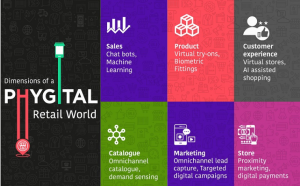A good brand safety initiative should not be limited to the basic standards set by technology partners but a more comprehensive discussion of the brand’s needs.
After years of breaking news, brand safety challenges continued to steal headlines in 2018. Despite improved dialogue between brands, media owners and tech partners, it is clear that execution belies the perceived simplicity of the topic.
The term “brand safety” is defined as “the controls that companies in the digital advertising supply chain employ to protect brands against negative impacts to the brand’s consumer reputation,” according to a report co-commissioned by TAG (Trustworthy Accountability Group).
To date, most brand safety efforts have centered on all-or-nothing solutions, blocking anything that has even remote potential to harm a brand.
Some brands want to block all news placements for a given week until news around a disturbing event subsides. Such sweeping exclusions are understandable but can do a disservice by excluding valid inventory and missing opportunities to reach desired customer segments in what should be approved, premium venues.
As we move into 2019, brands now have the opportunity to take advantage of customizable capabilities by working with their technology partners to deliver bespoke safety solutions to campaigns, so they no longer have to follow a one-size-fits-all method.
Applying brand suitability to brand safety
This often starts with an understanding of brand suitability, which is just one pillar of brand safety. For example, the appropriate context for brand messages around products geared to parents of newborns will likely differ from the context where single men are looking for romantic advice.
The job of a technology partner is to understand the brand’s needs and define the benefits of reaching people on particular publishers while explaining the potential risks.
Properly armed with that knowledge, brand managers can then decide where to draw the lines and whether and how to have a partner help create custom whitelists of approved sites or apps — as well as blacklists of ones they need to block.
There are inevitably web pages and apps on which no reputable brand wants to appear; places that have highly inappropriate adult content or an abundance of invalid or non-human traffic (IVT or NHT), that encourage illegal downloads or other types of fraudulent commerce or ads. Excluding those from a buy should be standard practice without which no partner can claim reputably offer brand safety.
Standards and partners are key
In aiding brand safety, the best digital media buying partners employ both technology and human experts who evaluate sites as they evolve and look at new ones as they gain popularity.
Technology providers may have the capability to review keywords on a page and exclude that page or app from being offered for a programmatic advertising bid. If in a worst case scenario, the page is later revealed as dangerous post-bid, they have the diligence and capabilities to block the ad from appearing to protect the brand. But it’s essential that these pages are reviewed before being added to a custom blacklist for the long-term.
A sound brand safety initiative should not be limited to the basic standards set by technology partners. Media buying partners should have their own standards to ensure their messages appear in the best environments for their brands. Some standards to consider include:
- ads are entirely viewable,
- the pages on which they appear are not overly cluttered with advertising,
- sites have clearly defined privacy policies that follow guidelines from bodies like Google Ads or AdChoice to protect against liability due to GDPR and newer laws in California and other U.S. states.
Media partners must also make sure every technology vendor they employ follows industry guidelines such as those of the IAB, and more recently the MRC, ANA, and the 4As.
Push-button solutions don’t exist
A true brand safety partner can create custom whitelists for marketers who want particular contexts — for example, association with high-end luxury or fashion brands — and allow for venues that other brands may need to exclude. Whitelists and blacklists are living documents.
The partner must also review app environments and make sure those, too, are appropriate, have good descriptions, download correctly and have strong privacy policies and high user ratings.
These measures must co-exist with a partners knowledge of how to achieve scale and reach a brand’s desired audience segments, whether on desktop, addressable TV or OTT screens; in broadcast-style media programming or news websites; or gaming environments on mobile screens.
Action is required
Doing the best job of ensuring brand safety means having clear and comprehensive discussions of the brand’s needs, presenting all available data and options and executing at the highest levels possible.
Brand safety is an evolving discipline, executing it means trying to capture a constantly-moving target. Nefarious actors always look for ways to thwart systems and get around carefully delineated barriers. In 2019, advertisers must understand that a successful brand safety protocol requires proactive attention from vigilant experts who constantly review sites and environments, know the technologies and platforms and can deploy them at a moment’s notice on their clients’ behalf.
Opinions expressed in this article are those of the guest author and not necessarily Marketing Land. Staff authors are listed here.
Marketing Land – Internet Marketing News, Strategies & Tips
(66)





